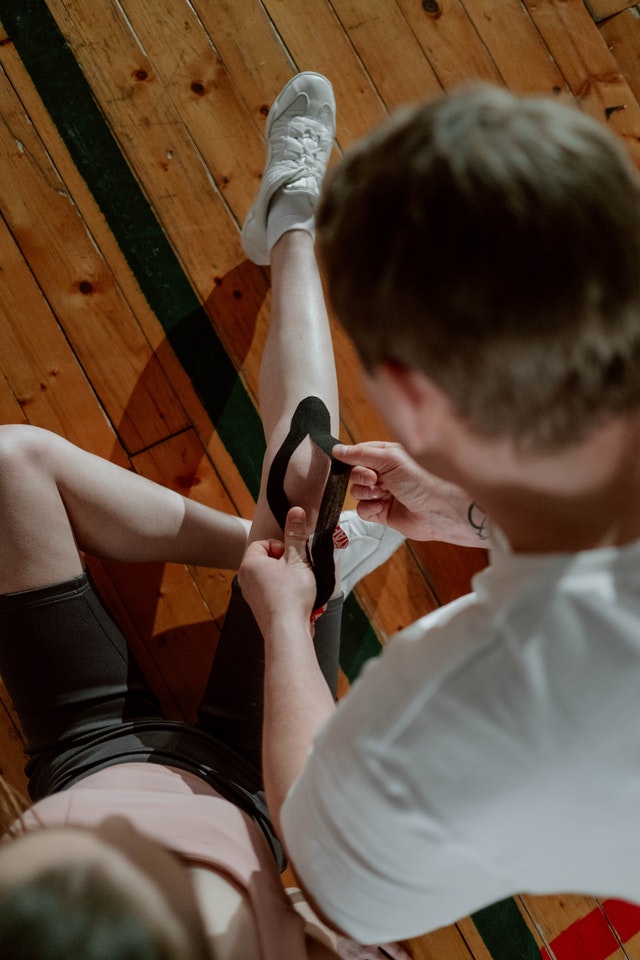
The knee is one of the largest joints in the body and helps you to walk. It takes a massive force for every step you take, which goes through your knees. The heavier you are, the more weight your knees have to hold up. This constant movement puts pressure on your joints, and it is easy to develop an injury.
Lower Back Problems
The muscles around your knees connect the nerves to your lower spine. When these nerves become irritated or compressed, starting from the root of your spine, one of the symptoms you may experience is sciatica. The sciatic nerve is the thickest and longest nerve in the body. The medical term for sciatica is radiculopathy. It consists of five nerve roots: three from the final section of the spine called the sacrum and two from the lower back region known as the lumbar spine.
Radiculopathy is a common cause of weakness and pain in the knees. It usually starts as back pain that travels down to your leg and knee, causing discomfort. This pain can also switch to the outer side of the leg, down the hips, and other body parts connected to the area. Sciatic pain only affects one leg at a time. You will not experience pain in both knees at the same time.
If your knee pain is unbearable, then you need to schedule a diagnostic workup with a Phoenix spine surgeon. It helps explain your symptoms to find out the underlying cause of the pain.
Arthritis
Osteoarthritis is one of the most common forms of arthritis that affects the knee joints. It is usual for your joints to go through a cycle of wear and tear over a person’s lifetime. During this process, the body can repair the damage. When the body’s processes repair the joints, it can cause changes to the structure and shape. It is diagnosed as osteoarthritis when the changes occur in more than one joint.
The bones in your knee include the shin, thigh, and patella bones. Cartilage covers the ends of your bones, which helps with sharing the weight evenly across the knee joint. Osteoarthritis causes the cartilage to thin, and the joint’s surface becomes rough. It results in your knee not moving smoothly, feeling stiff, and experiencing pain.
Tendonitis
Patellar tendinitis is an injury to the tendon connecting your kneecap to your shinbone. It is often called the jumper’s knee, which occurs from jumping on hard surfaces. Tendonitis also can occur from overuse of the knee joint. The patella tendon works in combination with the muscles at the front of your thigh. It helps the knee to extend so you can run, kick and jump.
Repeated stress strains the tendon and can cause inflammation. Common symptoms may include:
- Tendon tears
- Swelling
- Tenderness around the patellar tendon
- Pain when walking
Torn cartilage
The menisci are the C-shaped pieces of cartilage inside of each knee. It acts as a cushion between your thighbone and shinbone. The menisci also absorb most of the force the body sustains when walking. Activities that cause the knee to rotate or twist with force can result in a torn meniscus. This injury causes stiffness, swelling, and pain. Torn cartilage also limits knee motion and makes it difficult to extend your leg completely.
Strained Knee Ligaments
The four major ligaments in the knee are the anterior cruciate ligament (ACL), posterior cruciate ligament (PCL), medial collateral ligament (MCL), and lateral collateral ligament (LCL). They are short bands of stretchy tissue that hold the knee together. Knee ligaments also give the joint strength and stability. An injury to one of your ligaments causes pain and instability.
Common symptoms of a cruciate ligament injury are pain and a popping sound that occurs at the time of the trauma. Your knee will buckle when trying to stand. Common symptoms of a collateral ligament injury include pain, swelling, and the knee buckles and pops. It is common to experience swelling at the injury site and pain at the sides of your knee. Strained knee ligaments have symptoms like other health conditions.
A spine specialist can help find the root cause of your knee issues. Your specialists will develop a treatment plan that improves your function and get you back to your regular activities.


